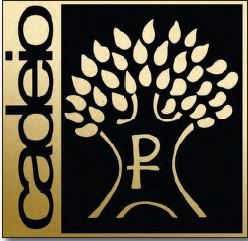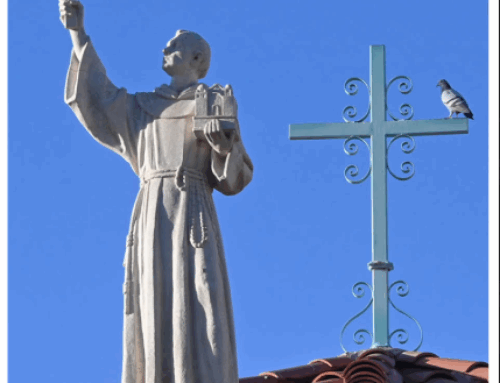(This article originally appeared in the TAU-USA Fall Issue #101)
CADEIO 2020 INTERRELIGIOUS SUMMER INSTITUTE
By Kelly Moltzen, OFS
As a representative of the OFS-USA Ecumenical Interfaith Committee, I had the opportunity to participate in the 2020 Interreligious Summer Institute with CADEIO, the Catholic Association of Diocesan Ecumenical and Interreligious Officers. As Catholics, we are called to ecumenical and interreligous dialogue in the foundational Vatican II documents of the Decree on Ecumenism (Unitatis Redintegratio) and the Declaration on the Relation of the Church to Non-Christian Religions (Nostra Aetate). We focused this summer on the call to interreligious dialogue in Nostra Aetate. While the institute was held virtually instead of in person due to the pandemic, it was a rich experience with much wisdom shared about the traditions of Judaism, Islam, Hinduism, and Buddhism. It is with my understandings and additional thoughts from John Borelli, Ph.D., Special Assistant to the President for Catholic Identity and Dialogue at Georgetown University and coordinator of the CADEIO summer institute, that I offer to you the teachings given at the 2020 CADEIO.
These traditions have been practiced for millennia, developed by their founders mainly to provide guidance for living in the world. Although they each contain multiple theological traditions, which differ significantly from Christian theology, they provide spiritual sustenance for half the world’s inhabitants. Nostra Aetate focused on sharing the spiritual, moral and cultural values we hold in common with the followers of these traditions through dialogue and collaboration, although mutual enrichment through theological dialogue is also encouraged. Citizenship is viewed as a contract, and contracts are sacred throughout the world where religion and society interpenetrate. Like Christianity, Judaism and Islam spell out practical realities of law and history and are guides and inspiration for putting belief in action, as they emphasize living according to the divine law. Jews and Muslims also believe their guidelines should be subject to changes based on circumstances that arise over time. Doctrines and practices change, as we observe with them, and as Vatican II taught in so many ways.
Muslims believe Muhammad was the last prophet, in line with the Abrahamic prophets who came before him. Muhammad, once he was established with his wife as a successful merchant, withdrew from society for meditation on the One God and heard a profound spiritual call that motivated him to warn people about their actions. Muslims honor Mary and are strongly monotheistic: the first Muslims preached monotheism to the polytheistic Meccans and other Arab tribal peoples of the Arabian Peninsula. They even worry that Christians can be polytheistic, because their Qur’an presents the Christian trinity as three different gods, divine father, mother and son. Muslim scholars point out that the trinity in the Qur’an is not the trinity in which Christians believe; however, their warning is helpful to Christians to understand that Father, Son and Spirit are all substantiations of the one God. But even so, in line with the unifying call in John 17:21 “That they all may be one,” Muslims call on Jews and Christians to come together to serve God: “O People of the Book! come to common terms as between us and you: That we worship none but Allah (God in Arabic)” (Qur’an 3:64). Further, the goal of Islam is to establish peace and stop oppression: [“Whoever saves one—it is as if he had saved mankind entire” Qur’an 5:32). The Qur’an includes rules that promote democracy, human rights, healthy interactions with neighbors, women, rights of minorities, finance, and equality. Nostra Aetate acknowledges that over the centuries there have been not a few conflicts and clashes between Christians and Muslims, despite the call of both traditions for greater unity in love and service, due largely to the integration of religion with the civilizations of the past.
Hinduism is also monotheistic, despite the many forms of gods and sectarian groups devoted to different gods. The characterization that Hinduism is polytheistic came about when India was colonized by the British, who tended to view Hindus from their British perspective as Christians and to focus on the scriptural traditions rather than to understand the rich devotional life of Hindus. There is a movement among Hindu scholars to find “decolonized epistemologies,” that is, to come to an internalized understanding of the tradition apart from the theories of outsiders and return Hinduism to its original meaning. Their murti (images, statues) are symbolic icons–the embodiment, manifestation, incarnation, or personification of a deity. Their belief is one of panentheism, that there is an essence of the divine that abides in all, and that there is an “Ishvara” (God, the Lord, the Supreme Being). Hindus believe in simple living and high thinking, have “Sanskaras” (rites of passage), which parallel the Christian sacraments; and believe the environment is sacred and deserves protection, though many Hindus, like Christians, are not environmentalists.
In Buddhism, there are the Four Noble Truths, the basic teaching of the Buddha: there is suffering in the world; suffering has an origin, which is craving/thirst; the way to get rid of suffering is to extinguish the thirst; and there is a path that leads to the end of suffering (the Eightfold Path). To crave another re-birth is to not have achieved nirvana (enlightenment). Our lives are never satisfactory as long as we crave more and more and fail to understand that ceaseless craving leads ultimately to sorrow. Similar to the teaching from St. Augustine, who said in the opening passage of his Confessions, “You have created us for yourself, and our hearts are restless until they rest in You,” to achieve nirvana and the end of suffering is to escape the cycle of rebirth. The concept of the impermanence of worldly things is strong in Buddhism, as everything is constantly changing. One can achieve enlightenment with or without a body, because the body of the Buddha was once on earth, though the truth body of the Buddha has never ceased. Similarly, the body of Jesus is not here on Earth anymore, but the body of Christ is. Thus, as Buddhists believe that nirvana is the one and only reality, for them true resurrection is not the soul’s escape from the body, but allowing oneself to settle into nirvana, while for Christians the resurrection is an embodied experience of oneness with the resurrected Christ. For Buddhists and for Christians, we are more than a soul, we are physically embodied beings; however, the ultimate condition of resurrection and salvation are understood quite differently.
While we can examine the similarities between these traditions and Christianity, the richness of dialogue may come in examining the differences. There are four forms of interreligious dialogue: dialogue of everyday life; dialogue of action; dialogue of theological exchange; and dialogue of religious experience. The main goal of interreligious dialogue should not be about doctrine, but about building social solidarity, and we can build solidarity by acknowledging differences. This has been the emphasis of Pope Francis—dialogue is about accompaniment, journeying together, each in our own religious ways, but building solidarity for the greater moral and religious values we share. John Borelli of Georgetown University says, “dialogue is not a strategy but a way of salvation and friendship.” Borelli, who once worked at the U. S. Bishops’ Conference and served as a consulter to the Vatican, draws this quote from the teachings of John Paul II and Pope Francis. Both took the message of Nostra Aetate into their ministry as popes to provide example and leadership for Catholics. Interreligious dialogue should be a lifestyle, and something we approach with humility. By participating in grassroots interfaith dialogue, we can connect with others on a human level. There are important lessons for us to learn from practitioners of other traditions, which can even help us deepen our own understanding of Christianity and Catholicism. This can allow us to create new, interreligious rituals and prayer services. Further, by learning the practices of other traditions, such bowing one’s head in a Buddhist temple or taking one’s shoes off in a mosque, we can demonstrate our respect for those whose model of worship is different from our own. Interreligious dialogue can be a powerful way of promoting peace as well, as St. Francis demonstrated when he approached Sultan al-Kamil during the Crusades.
There is a great need to offer opportunities for religion education to young Catholics, in high schools, seminaries and formation houses. One way of doing this could be through bringing in different faith perspectives on ecology during a study of Laudato Si. We can also get involved in interreligious dialogue through local interfaith councils, by sharing meals together, and through Interfaith Power and Light chapters, which are affiliated with CADEIO.


I’m looking for a resource that could be used for an Ecumenical-allChristian Bible Study that focuses o. Franciscan principles.